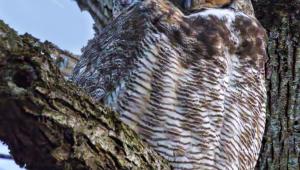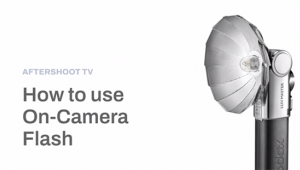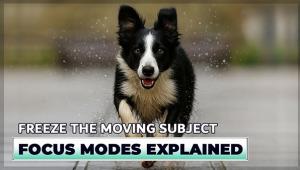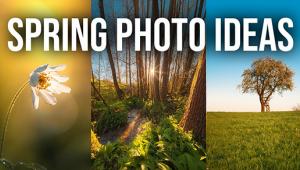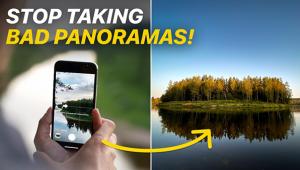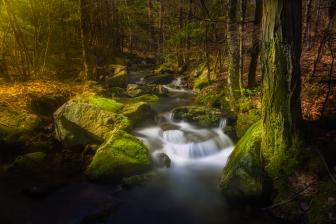Super Telephoto Primer: An FAQ On Long Lenses

All Photos © Stan Trzoniec
When it comes to possibilities, they seem endless. Wildlife is at the top of the list for many, perhaps to focus in on that bright cardinal outside your window or to record that special wolf pack in Yellowstone. Whatever your subject, a long telephoto will bring it in closer, sharper and with more detail than you’ve ever experienced before. Buying a telephoto lens might mean spending as much or more than the camera in your hands right now, so knowing what to get, and what it will get you, is an important part of making any purchasing decision. With that in mind, here’s a number of frequently asked questions on the subject of telephotos.
Why should I get a tele lens?
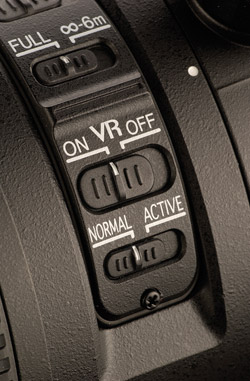
Simply put, it’s matching a lens to your specific needs. A telephoto narrows the view to isolate your subject. By using selective focus and the limited depth of field a long lens affords, it’s easy to separate your subject from confusing or busy backgrounds.

Telephoto lenses allow you to get in on the action from a moderate distance, which is a valuable tool for sports or wildlife photography. For the artist in you, compressing the distance between objects seems to exaggerate the closeness of buildings, cars on the freeway or large herds of animals. For those who like to photograph wildlife, telephotos reduce the amount of stress on the animal by affording the distance necessary to do so. Finally, telephotos can take the place of a macro lens in some cases due to the closer focusing abilities of modern long lenses. Personally, I have had great luck with larger flowers with my 500mm lens.
What does focal length mean, and how do the numbers translate to subjects I want to photograph?

When dealing with the various lenses and their focal lengths, think about what you want to photograph with it. For closer subjects like little league teams, the 300mm comes to mind. Wildlife needs more power and the 500mm or 600mm are perfect with room for the 800mm on dangerous game. In short, it all depends on the subject and your budget.
What effect does my camera and sensor size have on the effective focal length?
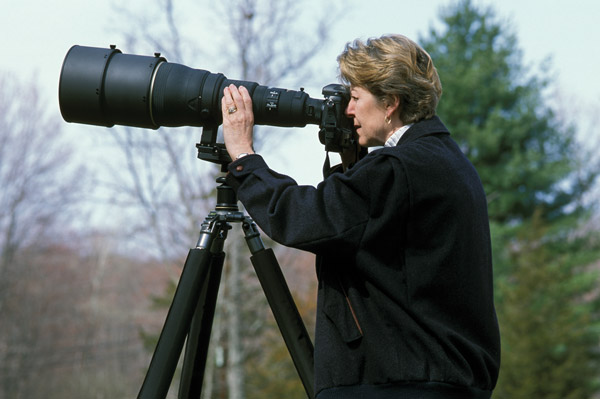
There are essentially two sensor sizes on modern D-SLR cameras—full frame and APS-C, three if you count Micro 4/3rd cameras. The full frame type camera—something more advanced or pro users tend to have—the focal length on the lens is what you get on the sensor. Many cameras today have a smaller—APS-C—type of sensor. For the most part this means there is a multiplication factor involved because the image projected by the lens lands on a smaller frame size. This means you multiply the focal length on the lens by about 1.5X or 1.6X, depending upon the manufacturer. Those with a Micro 4/3rd camera multiply the stated focal length by 2X.
For example, a 400mm lens yields an “effective” focal length of 600mm (with the 1.5X factor) and 800mm on a Micro 4/3rd sensor camera. Check your instruction book if you are unsure of the sensor size in your camera.
Your camera can be a deciding factor in your choice of the telephoto lens and, depending upon the sensor, could cut down on your initial expenses while still extending your range. For example, want to shoot wildlife with a Micro 4/3rd camera? A 300mm might be all you need (as it gives an effective 600mm view).
Should I get a zoom or a single focal length tele lens?
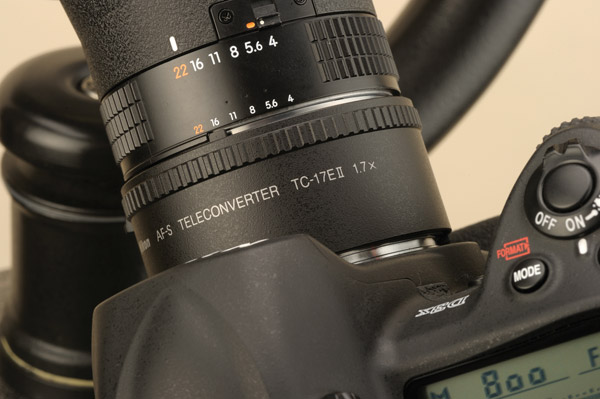
With all the modern design innovations, I personally find myself switching back and forth depending upon the assignment, subject or distance. There’s no denying the convenience of a zoom. For some, a 200-400mm or even 100-300mm are perfect when traveling as one lens can cover many picture taking situations.
Prime, or single focal length lenses generally offer more speed than a zoom, and by speed is meant their greater light-gathering ability. So if you find yourself always having to go to a higher ISO to work in low light or if you want to work handheld, the prime should be your choice. However, greater lens speed can be costly, weigh more and limit you to one specific focal length for the duration of your trip.
What does “stabilized” or vibration reduction in lenses mean?

Lens stabilization is becoming more and more of a standard feature on longer lenses and will help you in getting sharper images. Simply put, elements in the lens (or in stabilized camera bodies) move to counteract or compensate for your body movement when handholding the lens (that is, not shooting from a tripod). You shake one way, it shakes the other way. Modern lenses allow you to take photos from 3-4 shutter speeds slower than a lens without stabilization. Keep in mind, we are talking about camera shake, not the movement of the subject which you have to compensate for with a higher shutter speed or by panning the camera in a horizontal plane.
A stabilized lens has numerous advantages. You can work in dimmer light without a tripod, without having to raise the ISO (lower ISO equals better image quality) and you can shoot longer lenses with more confidence that you will not induce camera shake when doing so. Camera shake is one of the leading causes of poor image quality. So, if you have a choice between VR (various manufacturers call it different things) or not, choose the VR option. If your camera body incorporates a vibration reduction feature you won’t need a VR lens, so check that before you buy.
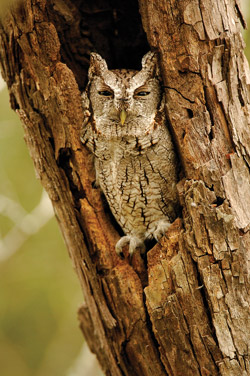
How does using a telephoto affect depth of field, or what is sharp and unsharp in the frame, and how is that different from a “shorter” lens?
Given the same aperture and shooting distance, longer lenses afford less depth of field than shorter lenses. This can be used as a wonderful creative tool, giving you the option to choose which part of the scene remains sharp or unsharp in the final photograph. This technique is called “selective focus”. By using a wider aperture (like f/4 or f/5.6) and getting closer to the subject, the background blends into softer colors and shapes. If you want the area behind the subject to be sharp as well you will have to use a very narrow aperture in many cases and perhaps even step back to get it all within the depth of field desired, you can refocus, move further back or stop down a few stops.
Are there any essential accessories I should consider to go along with my telephoto lens?
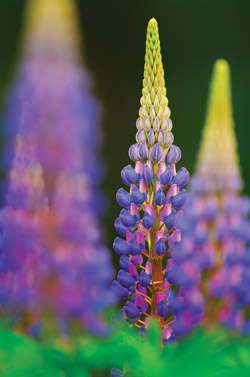
Yes, a tripod. Regardless of what you may hear, larger, super telephotos are much too big and heavy to handhold even with stabilization for predictable results, so a tripod is a necessary item. When setting up your tripod, make sure all of the legs are fully locked. If you have a center column option on your tripod, do not raise it to maximum height, as that will create an unsteady platform with big lenses. And if you have a big lens, mount the lens using a tripod collar directly on the tripod head rather than use the camera mount.
You should also consider a tripod “head”, which you mount between the camera or lens and the tripod itself. Unlike the common tripod pan head, which can be slow to respond to your demands, a ball head has unlimited movement and adjustments with just one knob.
What shutter speed is really the most effective with handheld technique?

No question about it, longer lenses vibrate more and high shutter speeds are the order of the day here. While you are no longer limited to shooting with one ISO as you work, there’s no doubt that shooting at the lowest ISO possible yields the best quality results.
The rule of thumb for an “average” steady shutter speed with any lens is to invert the shutter speed and use it as the minimum speed to use; for example, for a 200mm lens, 1/200 sec is a good starting speed; use a faster speed whenever you can.
At A Glance
Telephoto Lenses And Subject Matter
Primes (Single Focal Length)
300mm: Handy lens for closer wildlife, deer, elk, landscapes, flowers, people in crowds, pets and car races.
400mm: General, all purpose telephoto. Environmental portraits from a distance, patterns and reflections. With an APS-C sensor in your camera it is now a 600mm lens.
500mm: Sports, wildlife, details, textures, abstracts and compressing distance. My “go-to” lens for many wildlife shoots.
600mm: Sports, wildlife, small birds and dramatic sunsets. But keep in mind that the closet you might be able to focus is 20 feet (or less).
800mm: Dangerous wildlife and extreme compression of subject matter. An expensive and specialized lens.
Zooms
70-300mm: Good walking lens, especially when it includes Image Stabilization function. Excellent for birds, small mammals, travel and hiking.
200-400mm: Perfect travel lens. With an APS-C camera, it’s a
300-600mm lens.
300-800mm: For max power, but tripod-only for best results.
Stan Trzoniec is a frequent contributor to Shutterbug. His latest coffee table book, “The American Railscape” is a study in contemporary railroading available and autographed through his www.outdoorphotographics.com website. He can be reached at fotoclass@aol.com.
- Log in or register to post comments











